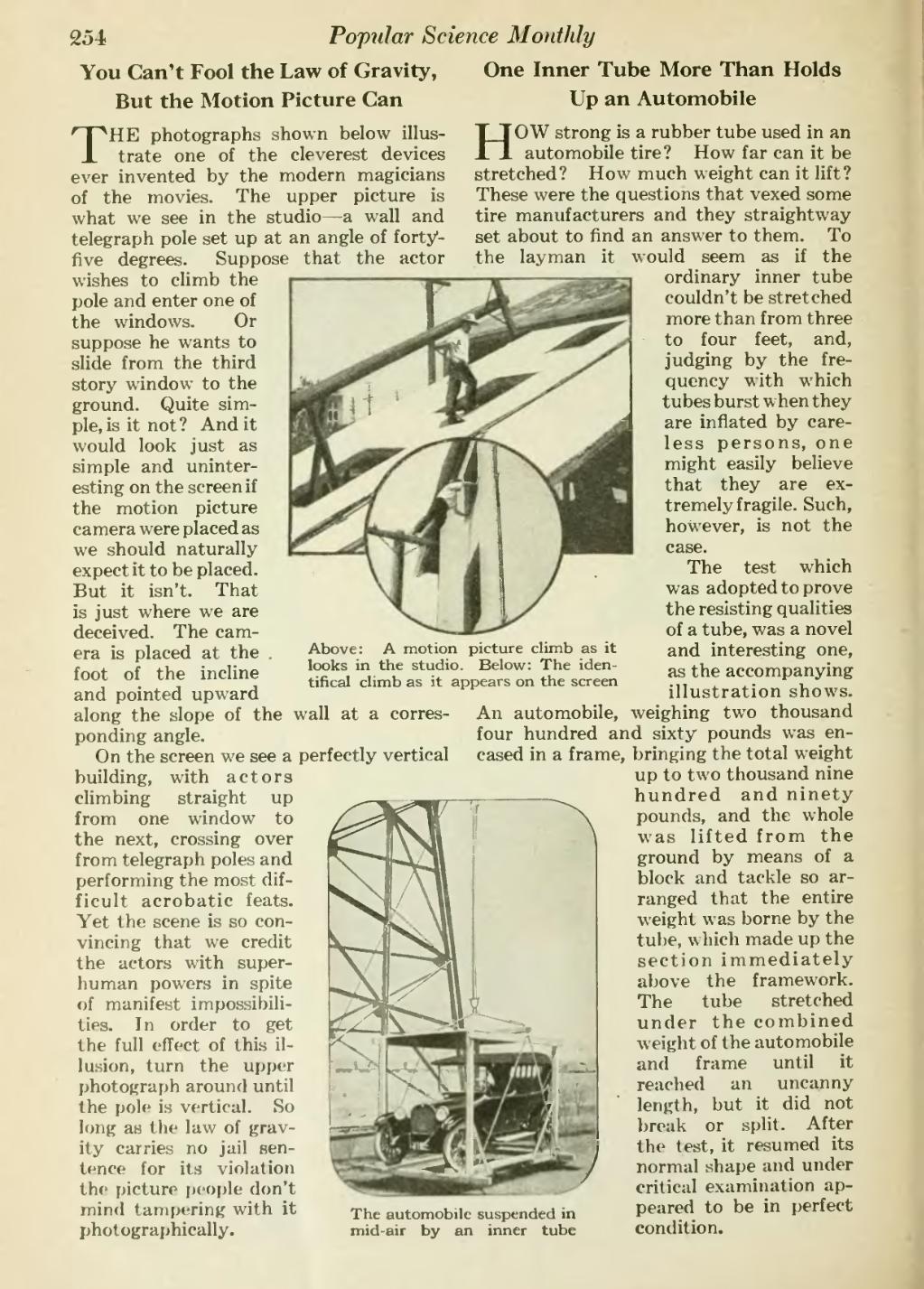254 Popular Science Monthly
You Can't Fool the Law of Gravity, One Inner Tube More Than Holds But the Motion Picture Can Up an Automobile
��THE photographs shown below illus- trate one of the cleverest devices ever invented by the modern magicians of the movies. The upper picture is what we see in the studio — a wall and telegraph pole set up at an angle of forty- five degrees. Suppose that the actor wishes to climb the pole and enter one of the windows. Or suppose he wants to slide from the third story window to the ground. Quite sim- ple, is it not? And it would look just as simple and uninter- esting on the screen if the motion picture camera were placed as we should naturally expect it to be placed. But it isn't. That is just where we are deceived. The cam- era is placed at the foot of the incline and pointed upward along the slope of the wall at a corres- ponding angle.
On the screen we see a perfectly vertical building, with actors climbing straight up from one window to the next, crossing over from telegraph poles and performing the most dif- ficult acrobatic feats. Yet the scene is so con- vincing that we credit the actors with super- human powers in spite of manifest impossibiU- ties. In order to get the full effect of this il- lusion, turn the upper photograph around until the pole is vertical. So long as the law of grav- ity carries no jail sen- tence for its violation the [)ictur(' pf'Oi)le don't mind tamijcring with it photographically.
��H
��OW strong is a rubber tube used in an
���Above: A motion picture climb as it looks in the studio. Below: The iden- tifical climb as it appears on the screen
���The automobile suspended in mid-air by an inner tube
��stretched? How much weight can it lift? These were the questions that vexed some tire manufacturers and they straightway set about to find an answer to them. To the layman it would seem as if the ordinary inner tube couldn't be stretched more than from three to four feet, and, judging by the fre- quency with which tubes burst when they are inflated by care- less persons, one might easily believe that they are ex- tremely fragile. Such, however, is not the case.
The test which was adopted to prove the resisting qualities of a tube, was a novel and interesting one, as the accompanying illustration shows. An automobile, weighing two thousand four hundred and sixty pounds was en- cased in a frame, bringing the total weight up to two thousand nine hundred and ninety pounds, and the whole was lifted from the ground by means of a block and tackle so ar- ranged that the entire weight was borne by the tube, which made up the section immediately above the framework. The tube stretched under the combined weight of the automobile and frame until it reached an uncanny length, but it did not break or split. After the test, it resumed its normal shape and under critical examination ap- peared to be in perfect condition.
�� �
